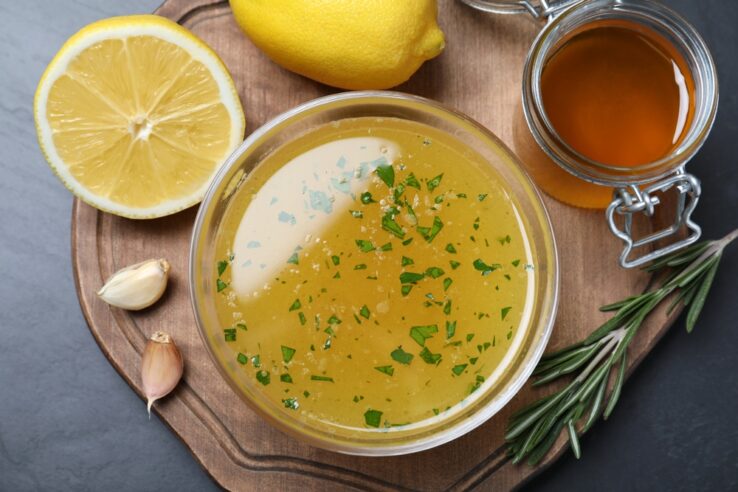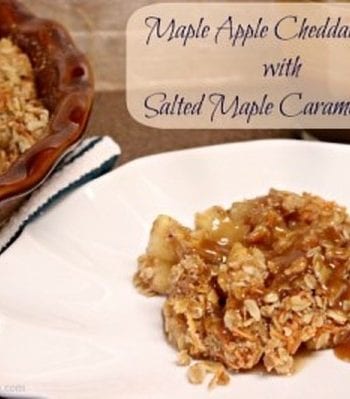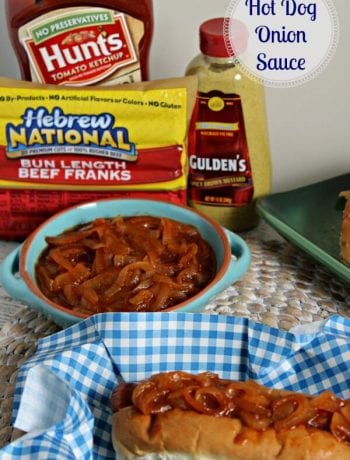In the pantheon of culinary arts, sauces hold a place of reverence and awe. Often, they are the unsung heroes, working diligently behind the scenes to turn a good meal into an unforgettable experience. They may seem simple, perhaps even trifling in the grand tapestry of gastronomy, yet the impact of a well-crafted sauce is nothing short of magical.
From the Béchamel that enhances your lasagna to the zesty chimichurri that livens up grilled meats, sauces are the true alchemists of the culinary world. In this article, we’ll explore how sauces can elevate everyday dishes to gourmet delights, and we’ll delve into the science, techniques, and cultural nuances that make sauces so extraordinary.
A Brief History

Source: pinklungi.com
Before we jump into the nitty-gritty, let’s take a moment to appreciate the rich history behind sauces. The word “sauce” comes from the Latin word ‘salsus,’ which means salted. For centuries, sauces were used as a preservation method, helping to extend the shelf life of perishable goods. The Egyptians, Greeks, and Romans all utilized sauces to various extents, using everything from honey and vinegar to fermented fish brine.
Fast forward to the Renaissance and beyond, where French cuisine started to formalize sauce-making into a fine art. The classic French “Mother Sauces” — Béchamel, Velouté, Espagnole, Sauce Tomat, and Hollandaise — set the framework for countless derivative sauces. These foundational formulas have been so influential that they continue to dictate modern Western sauce-making to this day.
The Anatomy of a Sauce
Understanding what makes a sauce tick is key to mastering its magic. Typically, a sauce comprises three fundamental components:
- Base: The foundational liquid, which can be anything from water, stock, or milk to wine, vinegar, or juice.
- Thickening Agent: Often used to give body to the sauce, common options include flour, cornstarch, and egg yolks.
- Flavorings: Spices, herbs, and other seasonings that impart the sauce’s characteristic taste.
Different combinations of these elements lead to an array of sauce types, ranging from emulsions like mayonnaise to reduction sauces like Balsamic glaze.
The Science Behind the Magic
Creating a sauce is not just about mixing ingredients; it’s a scientific endeavor. Emulsions, for example, require a stabilizer like lecithin (found in egg yolks) to mix oil and water. Meanwhile, reduction sauces rely on the evaporation of volatile components, concentrating flavors and thickening the texture.
Understanding the chemical interactions between ingredients can unlock a world of culinary creativity. For instance, the Maillard reaction — the process that browns food and enhances its flavor — can be harnessed in sauces to add a deeper, more complex profile.
Types of Sauces

Source: lacademie.com
Now that we’ve covered the basics, let’s delve into the diversity of sauces.
Emulsion Sauces
Mayonnaise and Hollandaise are classic examples. Here, fat droplets are dispersed in a watery medium, thanks to an emulsifier. These sauces are notoriously fickle and can “break,” separating back into their constituent parts. The key is to add the oil slowly and whisk vigorously.
Reduction Sauces
Sauces like Balsamic glaze or demi-glace are made by simmering a liquid until much of its water content has evaporated. The resulting sauce is rich and intensely flavored. A classic example would be reducing red wine with shallots and beef stock to make a rich Bordelaise sauce.
Gravies
Think of the luscious, thick brown sauce accompanying your Thanksgiving turkey. Gravies are usually made with meat drippings and a roux (a mixture of fat and flour) to achieve their characteristic texture and flavor.
Purée Sauces
Simple yet impactful, these sauces are made from puréed fruits or vegetables. Think of apple sauce with pork or a tomato sauce on pasta.
Ethnic and Regional Sauces
From Indian chutneys to Mexican salsas and Japanese Teriyaki, the variety is endless. These sauces often utilize unique ingredients native to their regions, like tamarind in Thai cuisine or guajillo chilies in Mexican dishes.
Techniques for Sauce Mastery

Source: cbc.ca
Temperature Control
Maintaining the right temperature is crucial. Too hot, and you risk breaking an emulsion or burning a reduction. Too cold, and some sauces may not thicken properly.
Timing
Some sauces, like Alfredo, are best served immediately, while others, such as marinara, benefit from longer cooking times that allow flavors to meld.
Tasting and Seasoning
Always taste your sauce before serving. This is the time to adjust salt, acid, or other seasonings. Remember, a sauce should complement the dish, not overpower it.
Versatility: Elevating Everyday Dishes
One of the greatest aspects of sauces is their ability to transform mundane meals into gourmet delights. A simple grilled chicken breast takes on a new life when smothered in a creamy mushroom sauce. A basic bowl of pasta becomes divine when tossed in homemade pesto. Even a modest scoop of vanilla ice cream can become a luxurious treat when drizzled with salted caramel sauce.
Quick Upgrades
- Stir-fry Sauce: Instead of relying on store-bought options, create your own with soy sauce, ginger, garlic, and a touch of honey.
- Homemade Gravy: Skip the packet and make gravy using turkey or chicken drippings, flour, and quality stock.
- Aioli: This is a fancy term for flavored mayonnaise but makes for an impressive dip or sandwich spread.
Full-Blown Transformations
- Coq au Vin: Transform a basic chicken stew by adding red wine, bacon, and mushrooms.
- Eggs Benedict: Elevate your breakfast game by learning how to make a foolproof Hollandaise.
- Gourmet Burgers: A homemade barbecue or special sauce can turn a regular burger into a restaurant-quality meal.
FAQs

Source: corriecooks.com
What is the difference between a sauce and a dressing?
Although both sauces and dressings serve to enhance and complement food, they differ in their typical applications and characteristics. Dressings are often used in cold dishes like salads and are usually emulsified liquids that are lighter and more pourable. Sauces, on the other hand, often accompany hot dishes and can range from thin to thick, often having a more complex flavor profile developed through various cooking techniques like reduction or simmering.
Can I freeze homemade sauces for future use?
It depends on the type of sauce. Sauces without dairy or eggs, such as tomato-based marinara or meat-based Bolognese, freeze quite well. However, emulsified sauces like Hollandaise, or dairy-based sauces like Alfredo, don’t usually fare well in the freezer, as they can separate or become grainy when thawed. Always store sauces in airtight containers and label them with the date before freezing.
How can I fix a “broken” emulsion sauce like mayonnaise or Hollandaise?
If an emulsion sauce breaks, meaning the oil separates from the rest of the ingredients, you can usually rescue it. For mayonnaise, whisk a fresh egg yolk in a clean bowl and gradually add the broken emulsion while whisking constantly. For Hollandaise, a couple of teaspoons of boiling water can be whisked into the broken sauce until it comes back together. In both cases, the key is to incorporate the separated ingredients slowly while whisking vigorously.
Can I substitute cornstarch for flour as a thickening agent in sauces?
Yes, you can substitute cornstarch for flour, but the ratio and final texture may vary. Cornstarch is a more powerful thickening agent, so you would need less of it compared to flour. Additionally, sauces thickened with cornstarch will be translucent and glossy, as opposed to the more opaque finish that flour provides. A typical substitution is to use half as much cornstarch as you would flour.
What are some vegan alternatives for thickening sauces?
A5: Vegans can utilize various plant-based thickening agents to replace traditional ingredients like egg yolks or dairy. Options include arrowroot powder, agar-agar, and guar gum. Coconut milk and cashew cream also work well for achieving creamy textures. Keep in mind that the flavor and texture of these substitutes can differ from traditional options, so it’s essential to test and adjust accordingly.
How can I infuse a sauce with herbal or smoky flavors?
For herbal infusions, you can steep herbs like rosemary, thyme, or basil in warm oil or the sauce base for an extended period before straining them out. To add a smoky flavor, options include incorporating liquid smoke, smoked paprika, or even charred vegetables like bell peppers or tomatoes. Always add these flavors incrementally and taste as you go to prevent overpowering the sauce.
Conclusion
The magic of sauces lies in their transformative powers. They are both science and art, requiring precision and creativity. And while it might take some practice to master the finer points of sauce-making, the end result is well worth the effort. With a bit of knowledge and a lot of passion, anyone can elevate their culinary repertoire from ordinary to extraordinary, all thanks to the wonder that is sauce.




